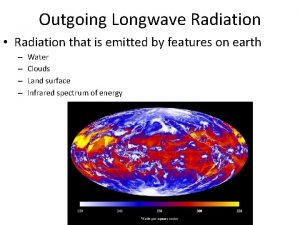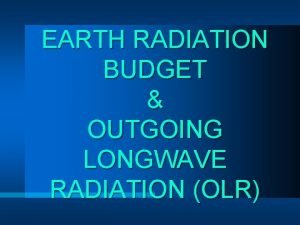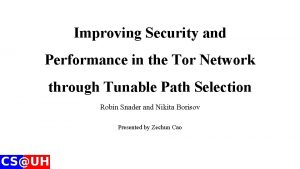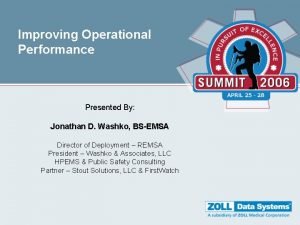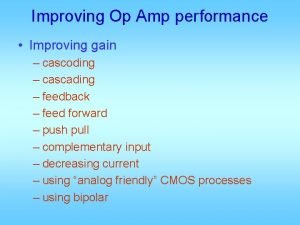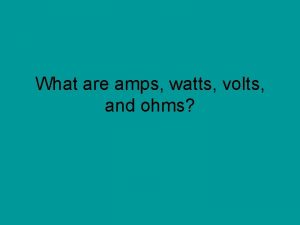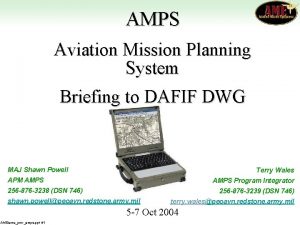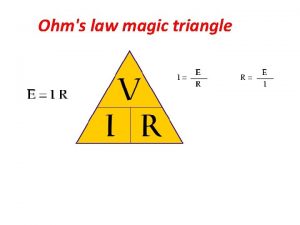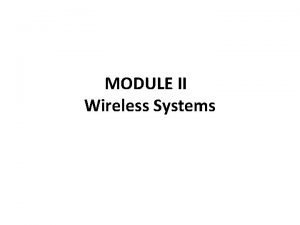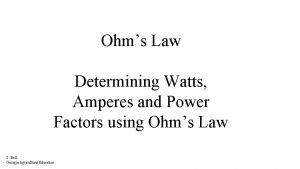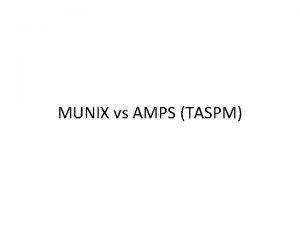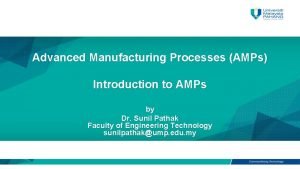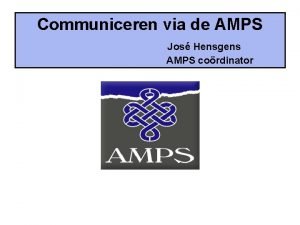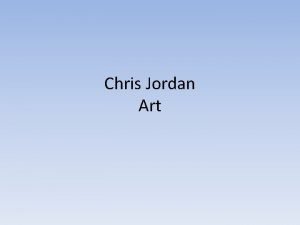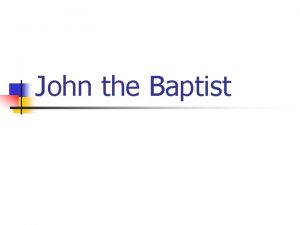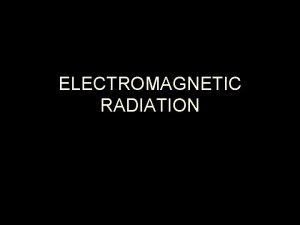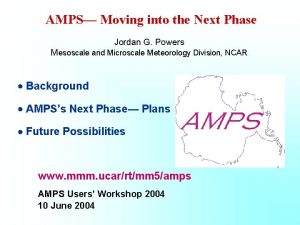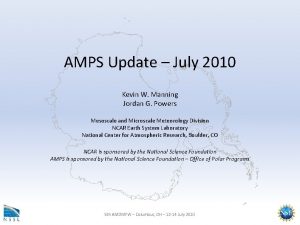Improving UpperLevel Performance in AMPS Longwave Radiation Jordan














- Slides: 14

Improving Upper-Level Performance in AMPS: Longwave Radiation Jordan G. Powers, Steven M. Cavallo, and Kevin W. Manning

• Motivation for AMPS Investigation – Examination of WRF simulations of Atlantic basin hurricanes: T biases at upper levels found – Model top cooling from longwave (LW) processes (RRTM LW scheme) significantly higher than observation • AMPS Testing – Analysis of summer and winter periods to assess extent of problem – Test simulations with RRTM LW scheme modifications performed

Upper-level T Biases: WRF 2009 Atlantic Basin Hurricane Forecasts (WRF) (v. Time) WRF–GFS Analysis (v. Time) -10 K max Upper-level cooling over time Output from fcst hr 6

RRTM LW Scheme Modification— Atlantic Basin Experiments Heating Rate Differences Bias reductions from mods (Modified – Unmodified RRTM) W/o H 2 O adj: Refined buffer layer and T profile Full mods: H 2 O adjustment (std profile) in buffer layer (to avoid excessive – 1 week period / Fcsts every 12 hrs / 6 -hr fcsts – MLS= Mid-Latitude Summer / TROP= Tropical MT moisture) Note: SLP RMSEs also decrease with modified scheme.

Configuration of AMPS for Investigation / Testing Domains: 45 -km / 15 -km 45 km Test fcsts: 6 -hr IC/BCs: GFS Test periods: Summer January 1 -7, 2010 Winter July 1 -7, 2009 15 km

RRTM LW Scheme: Original Model Top Treatment • Buffer layer from model top (MT) to top of atmosphere (TOA) – Extra computational level in LW scheme only: No new model η-level • Layer properties – T isothermal: MT value – qv constant: MT value – O 3 set to. 6 O 3 MT value

RRTM LW Modifications • Computational layer refined: Multiple levels to TOA added – p= 2. 5 mb – Extra levels in scheme, not η-levels (no significant extra run time) • Improved T representation – Temps at new levels related to average T profile (using T at MT) • Excessive moisture prevented: Layer H 2 O= 5 ppmv • O 3 interpolated from table

WRF Water Vapor Issue • Potential for Excessive Moisture at High Levels: Affects LW Flux Calculations – <Jan 2010: No H 2 O vapor fields above 100 mb in GFS files – WPS assumption (where nec’y): 5%≥ RH ≥ 1% for 300– 50 mb – Problem: Too moist in stratosphere • Standard profile value: 5 ppmv • WRF-Var minimum qv: qv= 1 e-6 kg/kg (o(5 ppmv)) (if qv < 1 e-6 kg/kg) WRF: Atlantic Basin Tests

AMPS Upper-Level Water Vapor Winter Testing Summer Testing Domain avg qv Top η 1/2 Level Sounding maxima ( 12 mb) WRF-Var min qv 1 e-6 SAW= Sub-Arctic Winter SAS= Sub-Arctic Summer

Analysis of AMPS Heating Rates: Original RRTM LW Winter Summer Excessive LW Heating Rates SAS LW SAS SW Net= ∂ /∂t LW + ∂ /∂t SW AMPS–SAS AMPS–SAW Cooling bias Heating Rate Bias SAW= Sub-Arctic Winter MLW= Mid-Latitude Winter SAS= Sub-Arctic Summer MLS= Mid-Latitude Summer

AMPS Differences from Standard Profiles and Single-Column (SC) Tests Winter : Extrapolated SC AMPS’s lesser cooling rate may reflect colder Antarctic stratosphere for SC model Summer SC top value: Artifact of extra level : Extrapolated SC AMPS: Cooling bias SC SAS: Projected cooling bias at MT (excl. artifact) for SC model Summer SC SAS test: Problem in RRTM LW scheme SAW Temps/SAS Temps: SC model run w/given temp profiles Single column: SC version of RRTM (run from domain-avgd profile of T)

Analysis of AMPS Heating Rates: Modified RRTM LW Winter Summer Heating Rates Max ~1. 8 K/d Modified – Control= Original RRTM LW MT T 5 days: ~9 K Experiment= Modified RRTM LW

Model Top Improvement: Summer ∂ /∂t (LW) Control ∂ /∂t (LW) New Mods reduce cooling and eliminate excess qv impacts ∂ /∂t (LW) New–Control _6 h (Total) New–Control hr 6 – hr 0 Mods reduce cooling bias ∂ /∂t (LW)= Instantaneous heating rates avg’d/fcst hr 6 ∂ /∂t (Total)= hr 6 – hr 0 Level = η 1/2

Summary • WRF MT cooling bias seen in Antarctic/AMPS application – Summer signal – Moderate compared to non-polar WRF applications • AMPS upper-level H 2 O vapor – Localized high qv biases near MT from soundings – Large vapor amounts can influence LW calculations • RRTM LW Mods: Decreased MT cooling & T errors in AMPS – Mods reduce LW flux errors and excessive cooling – Mods avoid LW errors due to areas of excessive qv at MT
 Outgoing longwave radiation
Outgoing longwave radiation Outgoing longwave radiation data
Outgoing longwave radiation data Improving own learning and performance examples
Improving own learning and performance examples Improving security performance
Improving security performance Improving operational performance
Improving operational performance Vin+
Vin+ Volts amps watts triangle
Volts amps watts triangle Aviation mission planning system (amps)
Aviation mission planning system (amps) Ti precision labs op amps
Ti precision labs op amps My wiggly amps
My wiggly amps Define ohm
Define ohm Amps in mobile communication
Amps in mobile communication Volts = amps x ohms
Volts = amps x ohms Performance levels
Performance levels Jcids process
Jcids process
